I visited Messolonghi by coach during my Christmas break in Epirus where I stayed in the historical city of Arta.
On our way back to Athens, the driver took us for a ride around the sea lake of Messolonghi, a historical town that is famous for an amazing feat of bravery during the Greek war of Independence.
The town was under siege by Turkish forces for many months, and the people had suffered for a long time with hunger and thirst. Seeing that their demise was certain, instead of surrendering to the Turks, they decided upon a heroic exodus from within the city walls, attacking the enemy with what little strength they had left. It was the night between the 10th and the 11th of April, 1826, and their heroism is still remembered today, as one of the most humbling acts of bravery the Greeks have ever known.
Today, Messolonghi is a stunning bustling town, graced by its beautiful sea lake (lagoon) that offers a treasure of gifts to both locals and tourists.
In the quaint residential areas of Kleisova and Tourlida, where I took the photos you can see above, the landscape is dotted with colorful and charming stilt houses on the sea lake that the locals call “pelades.”
The salt produce of Messolonghi, which comes in various types, is famous and highly sought after all over Greece as it contains high nutritional value (92 different metals and other nutrients).
On the quiet beach where we made a short stop a little further away from Tourlida there is a small museum dedicated to salt. There, at the little shop, people can buy various types of salt.
Messolonghi is also famous for its fish produce, including sea bass, eel, and tarama (i.e. bottarga – a mediterranean kind of caviar). At the many exquisite tavernas in town cooks prepare fish dishes with flair, confident about the freshness and high quality of the fish on offer that the sea lake provides in abundance.
One of the resident birds at the sea lake is the colorful Akyoni bird with its mournful song that resembles a kingfisher.
According to the ancient Greek legend, Alkyoni used to be a princess… She and her husband Ceyx were boastful and blesphemous towards Zeus and Hera. To punish them, Zeus killed Ceyx with a thunderbolt. When Alkyoni found out she threw herself into the sea. Then, the gods took pity on them both and turned them into Alkyoni birds.
On top of that, and as the Alkyoni birds made their nests on the rocks by the sea, the gods decreed that in the middle of winter there should be about 14 days of calm weather so that the alkyoni eggs can hatch safely.
Hence, the term the “Days of Alkyoni” (“Halkyone Days” aka “Alkyonides” in Greek) that traditionally come around the middle to the end of January in Greece every year, when it’s sunny and generally mild.
On our way out of the town of Messolonghi we stopped at the “Garden of the Heroes,” a grassy park of about 14 acres with tall palm trees, eucalyptus trees and pines that is dotted with 69 beautiful monuments, and even some tombs of local heroes, from various wars.
Some of the monuments were donated by armies of other countries that were allies or enemies to Greece in its many wars, such as Russia, Italy, Germany and France.
The buried remains here include those of the hero of the Greek war of Independence Markos Botsaris. In 1858, King Otto and Queen Amalia of Greece financed the planting of trees and donated a marble lion for the park.
I loved strolling around this beautiful park on a sunny day with the sound of birdsong delightful in my ears. However, my experience was considerably enriched, albeit with a great measure of sadness, to see the decrepit building of the town’s old hospital barely standing erect right beside the park.
Old image credit: Fourtounis.gr
Messolonghi’s old hospital was built in 1906 and was in operation until 1999. It is such a pity that it was abandoned and turned derelict to this tremendous extent in just over a couple of decades, having been totally left to its fate to battle the elements.
The marble plaque above the entrance reads: “Chatzikosta Brothers Hospital, founded 1906, during the years of the Mayor Sokratis…” (the surname is illegible).
Indeed, a bit of research confirmed the hospital was built and financed by brothers Georgios and Anastasios Chatzikostas. This is one of the oldest hospitals of Greece.
As I looked at it from behind the fence, unable to get closer, I tried to imagine its heyday, when it was busy with staff, visitors and patients coming and going in haste, the latter arriving by foot on stretchers, and others in army vehicles, during the many dark years of wars that my country has known since 1906. That’s two world wars, and the bloodiest one of all for my country, i.e. the civil war that followed WWII.
I look at the old photograph above which provides such a depressing contrast to the forlorn look of the hospital today and can only shake my head ruefully.
Still, I always aspire to a future in my country where gems of the past such as this one will be cherished and protected, instead of being left to go to ruin by neglect.
On a cheerful note, GO HERE to see all my photos from Messolonghi.
It was a swift visit, so I feel I need to go back there and stay awhile. For one, to absorb the beauty of the place and to walk along the seafront road that stretches for miles, the lake stunning, a splendid silver mirror under the blue sky.
I can see why Lord Byron loved Messolonghi so much… The great romantic poet was forever inspired by the brave Greeks, who fought for their freedom. He died in his cherished Messolonghi on April 19, 1824, at the age of 36, having been defeated by a high fever.
His body was embalmed to be sent for burial back to England, but the people of Messolonghi, who loved him just as much as he loved them, asked that part of him stays there. According to some sources, Byron’s heart remained in Messolonghi…
I don’t know about you, but all this talk about the sea lake of Messolonghi and its produce made me think ‘seafood’ LOL! So, I thought it would be apt to share one of my seafood recipes here with you.
It is my father’s recipe for cuttlefish (‘soupia’, in Greek) in tomato sauce, but squid (‘calamari’), which is smaller, can also be used. This meal can be equally enjoyed with rice, potato or pasta.
GO HERE TO GET THE RECIPE
Enjoy!
Sharing is caring! Here’s a ready tweet for you to spread some love:
Interested in travel, food and books from Greece? Here's a blog you will love! #Greek #blogger #writer Share on X
Special offer! Sign up below and get these books for FREE!

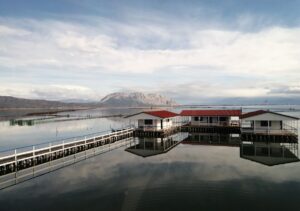
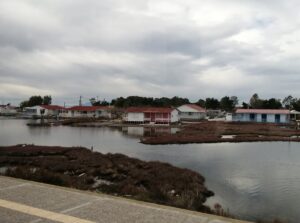
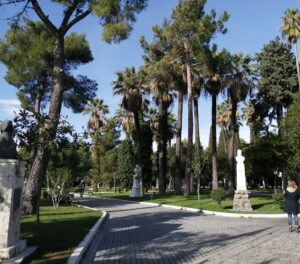
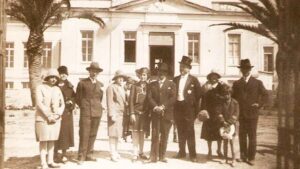
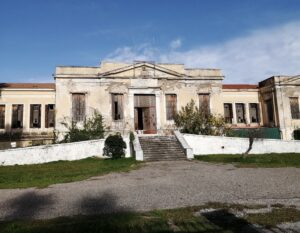
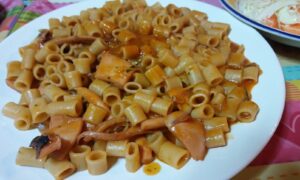

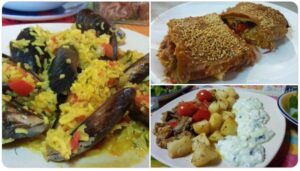
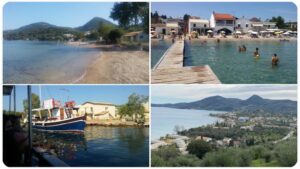
A fantastic account of an utterly unique area.
Thank for your visit and kind words, Suzie 🙂 xx